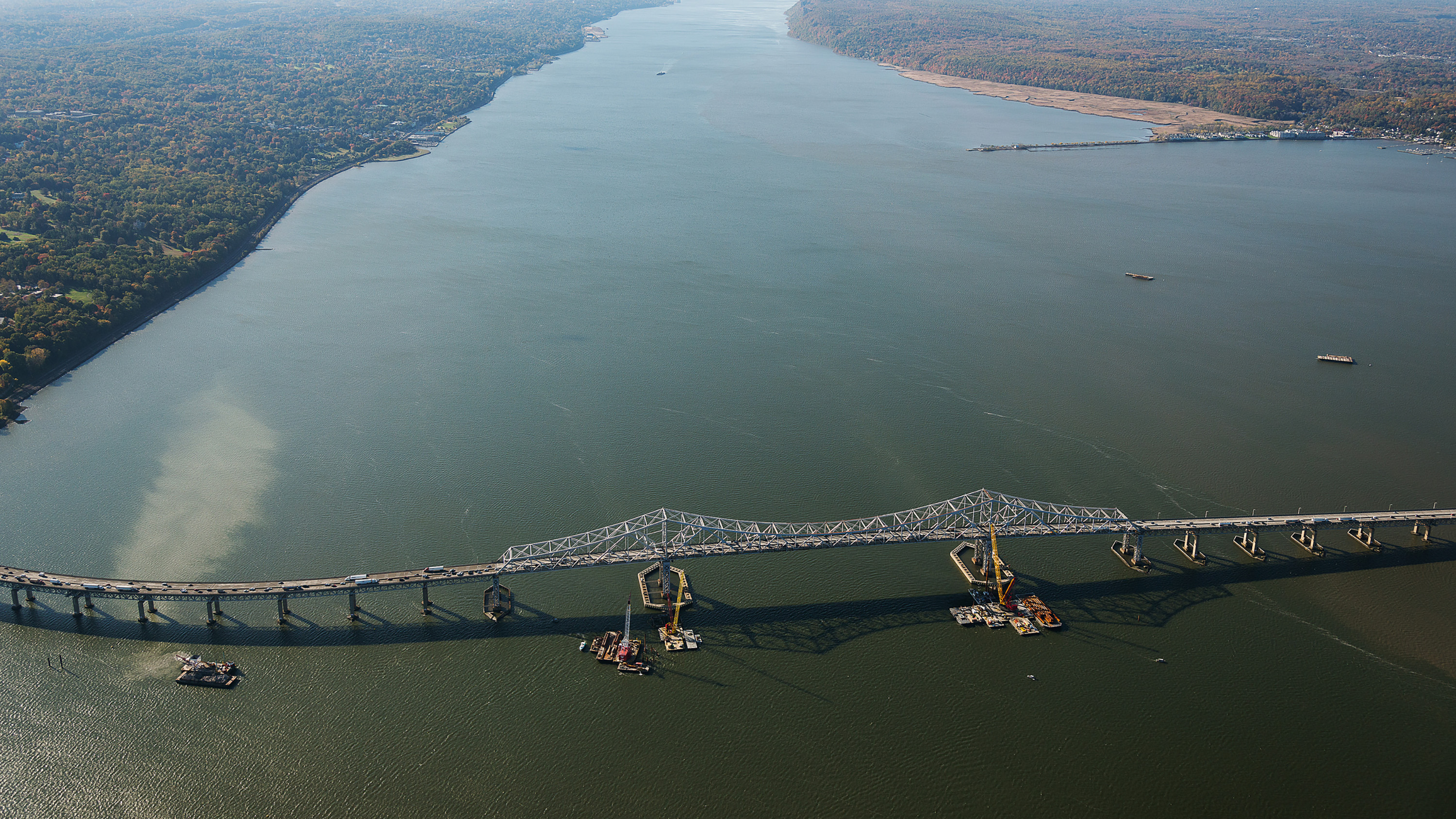Tappan Zee Bridge

Since the early 2000’s Weeks has worked on various aspects of the Tappan Zee Bridge project. Starting with a main channel pier protection project, Weeks, in joint venture with Grow Tunneling, was awarded a contract to construct a new bridge pier protection system. The design provided by URS Greiner, was a precast “T- beam” fender system supported by pipe piles. Ninety-six 48″ diameter pipe piles were driven up to 140 feet long with the final capacity of each pile between 500 and 750 tons. A total of 56 T-beam units were cast, ranging in weight from 90 to 280 tons.
Shortly thereafter, Weeks was brought back to conducting load testing and armoring. We were contracted to perform 14 each axial load tests and 2 each lateral load tests on the new bridge foundation piles with test loads up to 7320 Kips. Additionally, we were contracted to place two layers of armoring material over an access channel adjacent to the bridge and a total of approximately 360,000 CY of armor material was needed to cover the channel.
In 2013, Weeks was brought back as a subcontractor to Tappan Zee Constructors to perform dredging, using an environmental bucket, to create a construction access channel for the Tappan Zee Bridge Replacement project located on the Hudson River in New York. Weeks was responsible for dredging, dewatering, transporting, in barge processing, mechanically offloading material for upland disposal, and capping of the dredged area with armor stone. The dredging was divided into 2 phases; Phase 1 consisted of 800,000 CY and Phase II 150,000 CY. Phase I was the largest dredge material processing and upland placement project performed in the shortest timeframe ever performed in the New York Harbor, and was completed in time. The capping consisted of placing approximately 270,000 CY of armoring material.
Most recently, Weeks’ work with the Tappan Zee Bridge has consisted of dredging, transporting, amending and offloading 800,000 CY of contaminated material for the Tappan Zee Bridge project on the Hudson River in NY. Sediment was removed using an environmental bucket and once decanted, a portion of the sediment barges were towed to the Weeks Marine Greenville Yard in Jersey City, NJ for processing of the dredged material. Sediment processing was performed using Weeks Marine’s in-barge stabilization and solidification method. Once the stabilized dredge material (SDM) was ready for offload, the barges were transported to a site in Linden, NJ where the SDM was offloaded and spread out as beneficial reuse.
